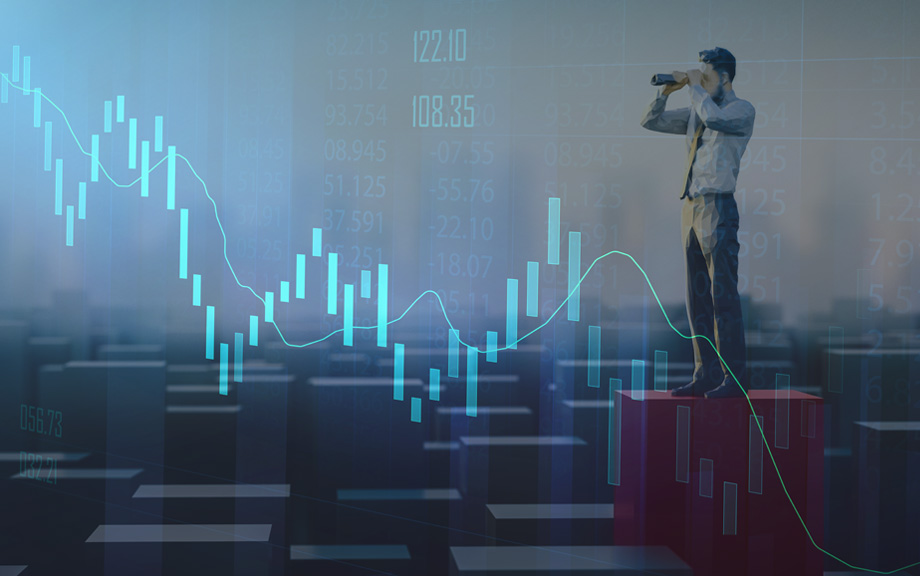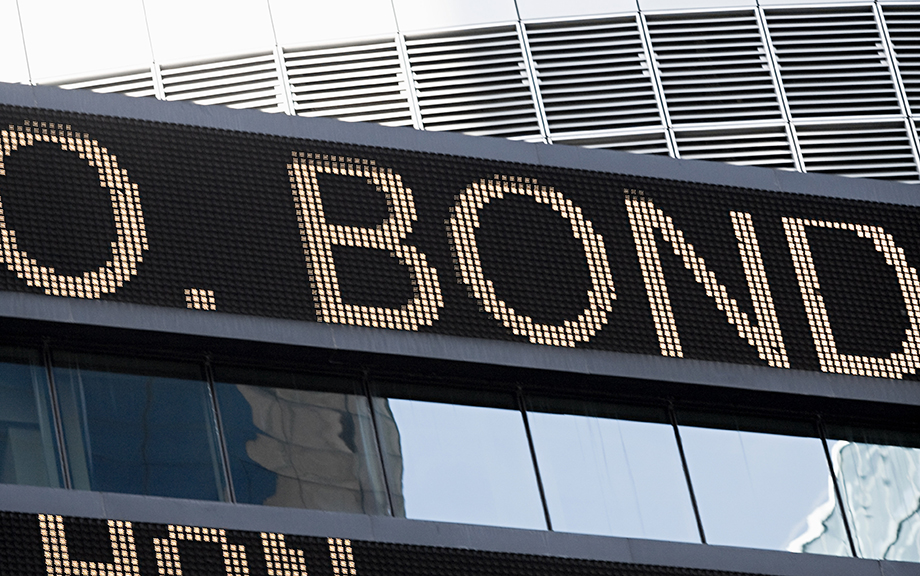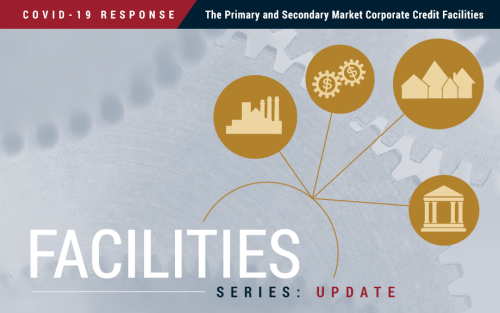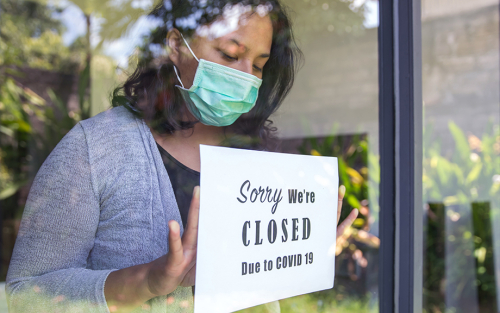Look Out for Outlook‑at‑Risk

The timely characterization of risks to the economic outlook plays an important role in both economic policy and private sector decisions. In a February 2023 Liberty Street Economics post, we introduced the concept of “Outlook-at-Risk”—that is, the downside risk to real activity and two-sided risks to inflation. Today we are launching Outlook-at-Risk as a regularly updated data product, with new readings for the conditional distributions of real GDP growth, the unemployment rate, and inflation to be published each month. In this post, we use the data on conditional distributions to investigate how two-sided risks to inflation and downside risks to real activity have evolved over the current and previous five monetary policy tightening cycles.
What’s New with Corporate Leverage?

The Federal Open Market Committee (FOMC) started increasing rates on March 16, 2022, and after the January 31–February 1, 2023, FOMC meeting, the lower bound of the target range of the federal funds rate had reached 4.50 percent, a level last registered in November 2007. Such a rapid rates increase could pass through to higher funding costs for U.S. corporations. In this post, we examine how corporate leverage and bond market debt have evolved over the course of the current tightening cycle and compare the current experience to that during the previous three tightening cycles.
What Is “Outlook‑at‑Risk?”
Editor’s note: Since this post was first published, the y-axis label in the last chart has been corrected. February 15, 9:30 a.m.

The Federal Open Market Committee (FOMC) has increased the target range for the federal funds rate by 4.50 percentage points since March 16, 2022. In tightening the stance of monetary policy, the FOMC balances the risk of inflation remaining persistently high if the economy continues to run “hot” against the risk of unemployment rising as the economy cools. In this post, we review a quantitative approach to measuring the evolution of risks to real GDP growth, the unemployment rate, and inflation that is inspired by our previous work on “Vulnerable Growth.” We find that, in February, downside risks to real GDP growth and upside risks to unemployment moderated slightly, and upside risks to inflation continued to decline.
How Is the Corporate Bond Market Functioning as Interest Rates Increase?

The Federal Open Market Committee (FOMC) has increased the target interest rate by 3.75 percentage points since March 17, 2022. In this post we examine how corporate bond market functioning has evolved along with the changes in monetary policy through the lens of the U.S. Corporate Bond Market Distress Index (CMDI). We compare this evolution to the 2015 tightening cycle for context on how bond market conditions have evolved as rates increase. The overall CMDI has deteriorated but remains close to historical medians. The investment-grade CMDI index has deteriorated more than the high-yield, driven by low levels of primary market issuance.
What Is Corporate Bond Market Distress?

Corporate bonds are a key source of funding for U.S. non-financial corporations and a key investment security for insurance companies, pension funds, and mutual funds. Distress in the corporate bond market can thus both impair access to credit for corporate borrowers and reduce investment opportunities for key financial sub-sectors. In a February 2021 Liberty Street Economics post, we introduced a unified measure of corporate bond market distress, the Corporate Bond Market Distress Index (CMDI), then followed up in early June 2022 with a look at how corporate bond market functioning evolved over 2022 in the wake of the Russian invasion of Ukraine and the tightening of U.S. monetary policy. Today we are launching the CMDI as a regularly produced data series, with new readings to be published each month. In this post, we describe what constitutes corporate bond market distress, motivate the construction of the CMDI, and argue that secondary market measures alone are insufficient to capture market functioning.
How Is the Corporate Bond Market Responding to Financial Market Volatility?

The Russian invasion of Ukraine increased uncertainty around the world. Although most U.S. companies have limited direct exposure to Ukrainian and Russian trading partners, increased global uncertainty may still have an indirect effect on funding conditions through tightening financial conditions. In this post, we examine how conditions in the U.S. corporate bond market have evolved since the start of the year through the lens of the U.S. Corporate Bond Market Distress Index (CMDI). As described in a previous Liberty Street Economics post, the index quantifies joint dislocations in the primary and secondary corporate bond markets and can thus serve as an early warning signal to detect financial market dysfunction. The index has risen sharply from historically low levels before the invasion of Ukraine, peaking on March 19, but appears to have stabilized around the median historical level.
The Overnight Drift in U.S. Equity Returns

Since the advent of electronic trading in the late 1990s, S&P 500 futures have traded close to 24 hours a day. In this post, which draws on our recent Staff Report, we document that holding U.S. equity futures overnight has earned a large positive return during the opening hours of European markets. The largest positive returns in the 1998–2019 sample have accrued between 2 a.m. and 3 a.m. U.S. Eastern time—the opening of European stock markets—and averaged 3.6 percent on an annualized basis, a phenomenon we call the overnight drift.
The Impact of the Corporate Credit Facilities

American companies have raised almost $1 trillion in the U.S. corporate bond market since March. Based on Compustat data, these companies employ more than 16 million people, and have spent more than $280 billion on capital expenditures in the first half of 2020, thereby supporting future economic activity. In this post, we document the contribution of the Primary Market and Secondary Market Corporate Credit Facilities (PMCCF and SMCCF) to bond market functioning, summarizing a detailed evaluation described in a new working paper. Improvements documented in an earlier blog post on the corporate facilities continued after the initial announcement as purchases began, and can be attributed both to the positive effects of Federal Reserve interventions generally as well as the facilities’ direct impact on eligible issuers in particular.
The Primary and Secondary Market Corporate Credit Facilities

On April 9, the Federal Reserve announced that it would take additional actions to provide up to $2.3 trillion in loans to support the economy in response to the coronavirus pandemic. Among the initiatives are the Primary Market and Secondary Market Corporate Credit Facilities (PMCCF and SMCCF), whose intent is to provide support for large U.S. businesses that typically finance themselves by issuing debt in capital markets. Corporate bonds support the operations of companies with more than 17 million employees based in the United States and these bonds are key assets for retirees and pension funds. If companies are unable to issue corporate bonds, they may be unable to invest in inventory and equipment, meet current liabilities, or pay employees. Maintaining access to credit is thus crucially important during the COVID-19 pandemic, both for issuing companies and for their employees. This post documents the dislocations in the corporate bond market that have motivated the creation of these facilities and explains how we expect these facilities to support U.S. businesses and their employees both through the COVID-related disruptions and beyond, when the economy recovers.















 RSS Feed
RSS Feed Follow Liberty Street Economics
Follow Liberty Street Economics